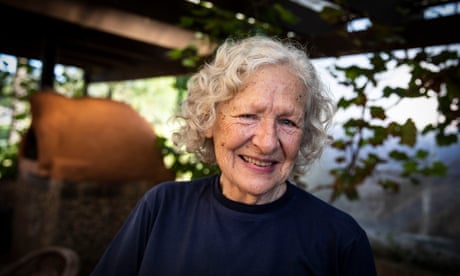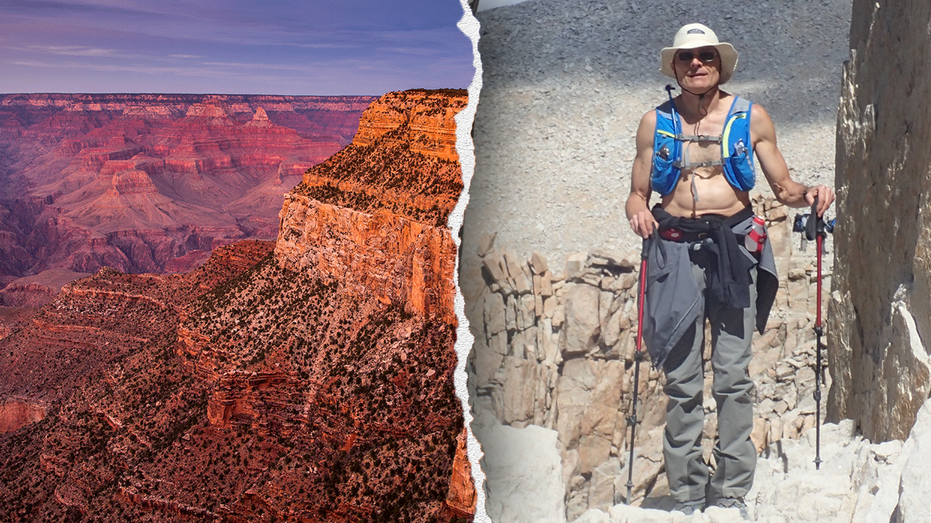- by foxnews
- 23 May 2025
‘I don’t want to live alone’: co-living, community and affordable housing
‘I don’t want to live alone’: co-living, community and affordable housing
- by theguardian
- 23 Apr 2022
- in news

Almost two decades ago, Lyndall Parris had her big idea.
"Two of my friends' husbands died, leaving them to continue bringing up their two teenagers alone. I just started thinking: this is crazy. I can't help them much, they're living in different places. If we were living together in a village, wouldn't it be easier?" she recalls.
Parris began researching alternative ways of living. She did a Tafe course to "to find out what the hell a website was", built a page and began connecting with like-minded souls online. In 2012, 24 of them pooled their money to buy a 68-hectare plot of land outside Gosford on the New South Wales Central Coast. In 2019, the first residents moved in. They called it Narara Ecovillage.
Today, Narara is home to 250 people who share lives and front yards. Residents come together for potluck dinners and movie nights, run their own school holiday program, hold community meetings and resolve disputes using a method called "sociocracy", where agreement on matters is reached via listening circles. Adults commit at least 52 hours a year to working bee tasks that contribute to the upkeep of their property or the bonds of their community, be that dusting cobwebs off their town hall or leading tai chi classes in the morning. It's a place where going to get a morning coffee can take an hour if you run into anyone along the way. Because as Parris describes it, "Nobody comes here if they don't want to say hello to their neighbours."
But their community is, Parris says, pretty normal.
"There are some people who come here looking for a sect and go, oh, these people are too sane for us," she says.
Narara Ecovillage is one of the many communities around the world that engage in what's known as collaborative living, where multiple people live together in a shared space. Collaborative living can encompass eco-villages such as Narara, in which a cooperative usually owns the land the residents buy in, through to urban apartment blocks where tenants rent a room and share spaces including kitchens and rooftops. The set-up can vary, but the through-line is an emphasis on community, sharing and participation, as well as prioritising green housing and sustainable living.
One example is in Melbourne, where a new co-living-inspired not-for-profit development called Nightingale creates carbon-neutral properties where owner-occupiers share gardens, laundries, multipurpose spaces and rooms that can be loaned out to visiting friends or family members. The CoHousing Co-op in South Hobart, Tasmania is a social housing venture with 12 homes and one "common house" which houses a kitchen, dining room, lounge area, common laundry, guest flat and office. It is managed by the residents and based on a Danish model of co-housing.
While the concept may be age-old, the modern reinvention of collaborative living has picked up steam over the past decade. Proponents believe it could help ease housing and climate crises, as well as solving a more intangible need - the human desire for community.
"I think that's one of the main reasons people gravitate towards these - it's the social connection," says Caitlin McGee, a research director with the University of Technology Sydney whose work focuses on sustainable housing.
McGee believes "pretty much all demographics" could benefit from the community aspect of collaborative living.
"I'm a single parent, I would love to live that way - just to get a bit of help," McGee says. "There are real positives for single parents around that community support. But also, people are having fewer kids [today]. A lot of people only have one child, and there's not that sibling experience. So it's more important to give them community and access to other kids."
McGee believes reimagining the way we approach housing via collaborative living could eventually help millennials and Gen Z locked out of the traditional property market as the idea becomes more widespread with cheaper entry points. At the other end of the age spectrum, collaborative living is particularly well-suited to retirees who want to downsize but still have community around them. And for Australians aged over 75, McGee says it's increasingly being looked to as "a better alternative to going into an aged care facility" - even piquing the interest of the royal commission into aged care quality and safety.
Around 30% of Narara's residents are aged over 50. For community elder Emily MacLaurin, a retired single grandmother, the chance to live around others was part of Narara's appeal.
"I have faced the prospect of living [alone] like my mother for 30 years. I'm by myself, I don't want to live like that," she says.
In time, academics such as McGee believe collaborative living may be more affordable than traditional housing options - if not through the cost of land, then the ability to share the cost of resources such as cars, washing machines and lawnmowers, or by forging the relationships that allow you to, say, drop the kids next door instead of pay for a babysitter.
But right now, Parris concedes, saving money is not what draws people to Narara.
Those wishing to join the community must buy into the co-op at a cost of $30,000. They then buy their lot of land, which typically costs $340,000, though lots can be subdivided to split the cost with others. Residents must then fund the construction of their own home. The dwellings at Narara range from tiny homes to abodes made out of hemp, as well as plenty of sustainable houses that wouldn't look out of place on a standard suburban street. The more unusual dwellings in their community include an earthship, a house made out of upcycled materials including tyres, and a Tolkienesque dwelling. All up, most residents end up paying close to market value for the chance to move in.
Living in close proximity can, however, cause teething issues. Parris says topics such as pet ownership have been divisive in the community, as have debates over Covid vaccination.
Stephanie Wainwright, a mother of two, moved to Narara with her partner to raise her family around a community. She says privacy "can be an issue", with kids prone to showing up on doorsteps at any hour - there are currently around 50 children in the community.
"There's definitely times when you want to escape the village, but it's always nice to come back," she says. A native Canadian, she felt isolated living away from family in Newcastle before coming to Narara. "We felt like salmon trying to swim upstream, very alone. We found other salmon."
In inner-city Sydney, a different demographic dominates another kind of collaborative living. At Uko, a chain of co-living apartment spaces, most residents are aged between 25 and 35. Uko launched in 2018 and has already opened 16 complexes in mostly inner-city suburbs, with their apartments aimed at young professionals or digital nomads who need somewhere to land and make friends in a new city. Residents rent small studio apartments and congregate in the shared lounge, laundry, kitchen and rooftops, as well as attend Uko-organised events such as parties and pasta nights.
"I used to live in student accommodation. I think this is much better, because people actually come downstairs and talk," says Khaled Al Meheiri, an international student from Abu Dhabi who lives at Uko's Newtown branch.
While places like Narara are driven by ideology, Uko is a developer-led business model. It's one that has been a hit - every Uko property is currently full and plans to open another 12 properties are under way. "It's an industry that is growing," says Marta Wheeldon, Uko's general manager. (One of their co-living competitors, Hmlet, has been less successful - it went into liquidation last year.)
It's easier for curious parties to dip in and out of collaborative living at Uko, where they only need to agree to a minimum three-month lease. What's stalling the growth of more co-housing projects like Narara in Australia is the red tape - and financial investment - that goes into buying as a collective.
"[Collaborative living] hasn't proliferated here and the main reason for that is the inability for a group of people to get construction finance," says Karen Deegan, an architect who has worked in collaborative living for over 10 years and currently volunteers with CoHousing Australia, a national organisation that advocates for and educates around co-housing.
Banks in Australia are not yet au fait with the idea that groups of people might want to buy land together. That means those wishing to create co-housing projects need to turn to specialist lenders, "and that finance is usually quite expensive", Deegan says. Groups who want to set up their own co-housing communities can struggle to compete financially with deep-pocketed developers, especially in urban areas. Getting the green light from councils can also be an issue, something those in the field believe could be solved by implementing statewide policy around collaborative housing that trumps finicky local laws.
Narara Ecovillage avoided the need for a mortgage by raising $4m between its founding members, who they call "pioneers", to buy their land outright. "If we had a bank involved, we wouldn't be here today," Parris says.
While CoHousing Australia is currently trying to encourage the idea that property developers could partner with groups who want to build collaborative living communities, Deegan believes Australia could eventually solve the problems that are preventing collaborative living from getting bigger here.
"We've seen that the model does proliferate in countries once you crack all these systemic issues with lending and councils," she says. "It [boomed] in the US, and countries throughout Europe, who have similar cultures to us, as soon as those couple of things were sorted out."
For now, the determined minority, such as those at Narara, will have to find ways to make it work. For its residents, the long road to breaking ground was worth it - even with the odd neighbourly dispute.
"You get your good moments and you get the odd falling out, like you would with a brother," retired nurse Lynda Matthews explains as she wipes down a nappy-changing pad as part of her annual working bee hours. "It's like a big family - that's the thing that keeps me here."
- by foxnews
- descember 09, 2016
United Airlines flight returns to Hawaii after concerning message found on bathroom mirror; FBI investigating
United Airlines Flight 1169 to Los Angeles returned to Hawaii after a "potential security concern" aboard the plane. The FBI and police are investigating.
read more


